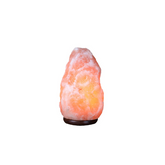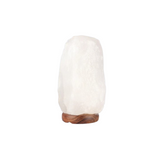Himalayan Salt and Blood Pressure: Facts and Precautions
Himalayan Salt and Blood Pressure: Facts and Precautions
Himalayan pink salt has gained popularity as a natural alternative to table salt, especially in wellness communities. But when it comes to blood pressure, myths often overshadow science. Is Himalayan salt better for hypertension? What role does sodium intake play? This article offers a balanced perspective based on facts, not fads designed specifically for individuals monitoring their blood pressure.
What Is Himalayan Salt?
Himalayan pink salt is a naturally occurring rock salt harvested from the Khewra Salt Mine in Pakistan. It gets its pink color from trace minerals like iron, magnesium, and calcium. Often promoted for its purity and mineral content, it contains up to 98% sodium chloride similar to regular table salt.
Key Features:
- Source: Khewra Salt Mine, Pakistan
- Composition: 98% sodium chloride, 2% trace minerals
- Texture: Coarser than table salt
- Uses: Cooking, bath soaks, salt lamps
Sodium and Blood Pressure: What Science Says
Sodium intake has a direct impact on hypertension, or high blood pressure. Consuming too much sodium causes your body to retain water, increasing blood volume and putting pressure on artery walls.
NHS Guidelines (UK)
The NHS recommends that adults consume no more than 6g of salt per day, roughly 2.4g of sodium. This applies whether you're consuming table salt, sea salt, or Himalayan salt.
"Whether it's Himalayan pink salt or regular table salt, the sodium content is high. Moderation is key." — NHS Guidance
Important Distinction
| Salt Type | Sodium Content (per gram) | Blood Pressure Impact |
|---|---|---|
| Table Salt | ~0.40g | High if overconsumed |
| Himalayan Salt | ~0.38g | Same effect |
| Sea Salt | ~0.38g | Same effect |
Despite marketing claims, Himalayan salt does not reduce blood pressure. It has similar sodium content to regular salt and must be consumed within recommended limits.
Myth vs Fact: Himalayan Salt & Hypertension
Marketing often claims that Himalayan salt is a 'healthier alternative' because of its mineral content. But let’s separate the facts from the myths:
Common Myths:
- “It’s better for your blood pressure.”
- “You can consume more because it’s natural.”
- “Trace minerals balance out the sodium.”
Verified Facts:
- It contains trace minerals, but in minute amounts.
- It has similar sodium levels to table salt.
- Overconsumption can still raise blood pressure.
For a deeper look at salt health misconceptions, explore our article: Is Himalayan Salt Really Healthier? Debunking Common Myths.
Practical Tips for Managing Salt Intake
If you’re concerned about blood pressure, consider these strategies:
1. Measure Your Salt
Use no more than 1 teaspoon of any salt daily (approx. 6g).
2. Check Food Labels
Pre-packaged foods often contain hidden sodium. Look for:
- Sodium per 100g
- Traffic light labels (UK)
3. Use Salt Alternatives
- Herbs and spices: Basil, oregano, garlic
- Citrus zest: Lemon or lime
- Salt-free seasoning blends
4. Drink More Water
Hydration helps flush out excess sodium from the body.
Are There Any Benefits for Blood Pressure?
While Himalayan salt doesn’t directly lower blood pressure, it may be part of a healthier lifestyle when used responsibly. For example:
- It is less processed than table salt.
- Potassium-rich foods like bananas help counterbalance sodium. Himalayan salt contains traces, but not enough to rely on.
- Using it in a balanced whole food diet may indirectly support cardiovascular health.
Important: Always consult your healthcare provider before making changes to your diet, especially if you’re on blood pressure medications.
Alternatives to Salt for Flavoring
If you’re trying to cut down sodium, here are flavorful substitutes:
| Alternative | Flavor Profile | Sodium (per gram) |
| Garlic Powder | Umami | 0g |
| Onion Flakes | Sweet & pungent | 0g |
| Apple Cider Vinegar | Tangy | 0g |
| Lemon Juice | Citrusy brightness | 0g |
| Smoked Paprika | Smoky heat | 0g |
Try combining these with Himalayan pink salt in small amounts for balanced flavor without overloading on sodium.
The Bottom Line
Himalayan salt is not a miracle cure for high blood pressure. While it may offer aesthetic and culinary appeal, it must be treated like any other sodium-rich product. Stick to recommended intake levels, understand your body's needs, and always prioritize evidence-based health practices.
For safe use of edible Himalayan salt, view our premium range: Shop Edible Salts.





